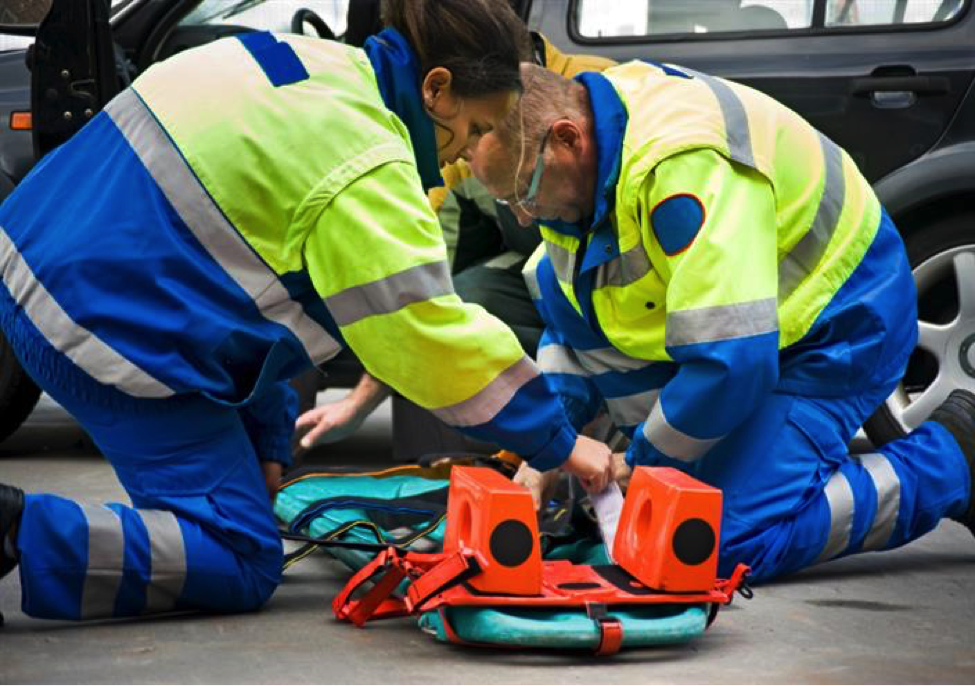
Your BLS engine company is dispatched to a “difficulty breathing” call and your ALS rescue is still in the process of delivering their previous patient to the hospital. Dispatch is sending the next closest rescue, but the responding unit has just notified you that they are held up by a train.
You arrive on scene, grab your O2 bag and jump kit and head inside. You and your fellow EMTs are on your own, at least for the next several minutes. You had better be prepared to assess and initiate treatment for a patient in respiratory distress!
With every patient, treatment begins with an assessment. When the patient is having difficulty breathing, every second counts. So let’s review the basics of respiratory assessment before we take a look at the techniques involved in basic airway management.
Assessing the patient in respiratory distress
Patients in respiratory distress are usually easy to spot, so your initial assessment begins with a quick visual exam before moving on to your physical assessment. Here are some considerations:
- Patient Position – Patients in distress will assume a position of comfort when possible, which usually includes sitting up straight to maximize airflow and lung expansion. They may use accessory muscles, appear agitated or frightened, and in extreme cases, be cyanotic.
- Auscultation – If it is manageable, have your patient sit upright when listening to breath sounds and be sure to place your stethoscope directly on the skin. Have them take slow, deep breaths, if possible, and listen for any abnormal lung sounds, which can include:
- Rhonchi – Continuous gurgling or bubbling sounds usually heard during both inhalation and exhalation, These sounds are caused by fluid movement and secretions in larger airways.
- Wheezes – Continuous musical sounds that last longer than 200 msec, created by the vibration of narrowed airway walls.
- Crackles – Discontinuous sounds that usually signal the presence of excess airway fluid, they can also be produced by the popping open of noninfected fibrotic or atelectatic airways.
- Stridor – a continuous musical sound usually heard on inspiration, caused by narrowing in the extrathoracic airway.
Basic airway management
Once you have assessed your patient and determined that they are truly in respiratory distress, it is time to take action. Here are your options when it comes to basic airway management:
- Positioning – Allow the patient to assume the position of comfort as long as you do not suspect trauma. Consider elevating or turning the backboard to assist respiratory efforts and protect the airway in trauma patients. If the patient is unresponsive, position the airway using:
- Head tilt-chin lift – The most common means of airway opening in the non-trauma patient.
- Tongue-jaw lift – Effective means of opening the airway and checking for foreign body obstruction; not used during artificial ventilation.
- Jaw thrust – Used to open the airway in suspected trauma.
- Airway Adjuncts – The OPA (oropharyngeal airway) can be used along with manual airway maneuvers to provide a patent airway in an unresponsive patient. Ensure the patient does not have a gag reflex when using the OPA. The properly sized device should reach from the patient’s central incisor to the angle of the jaw. Depending on your local protocols, you may have other airway adjuncts at your disposal, such as the Combitube or LMA.
- Supplemental Oxygen – Provide supplemental oxygen at either low- or high-flow, depending on your patient’s needs, using either a nasal cannula or a non-rebreather mask. Oxygen has few side effects and is the most commonly administered drug in the prehospital setting, so be prepared to treat your patient accordingly!
- Suction – There is no replacement for effective suction, so keep your portable suction unit on hand at all times, and don’t hesitate to use it. It is one of the most basic yet potentially lifesaving skills at your disposal.
- Personal Protection – Respiratory distress may result from infectious diseases such as COVID-19. Proper use of PPE and proper technique are always important for both the EMT and patient during assessment and treatment.
There are many effective ways for EMTs to jump-start the treatment of patients in respiratory distress, so keep your skills sharp and be ready to take the lead in airway management.
Editor's Note: This blog was originally published in October 2021. It has been re-published with additional up to date content.
















